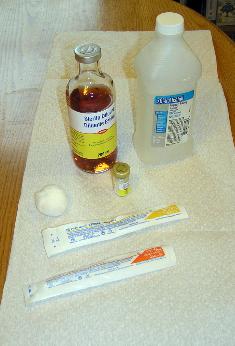
Marek's Disease is very prevalent everywhere there is poultry, and if your chickens catch it there is no cure. Vaccinating chicks for Marek's is not hard once you get the hang of it, and worth doing to prevent losses in your flocks. What you'll need:
When you order the vaccine, it comes in two parts, the small vial with the wafer of vaccine itself, and the large vial of dilutant. You only need to refrigerate the vaccine itself, not the dilutant. |
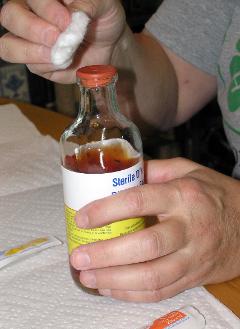
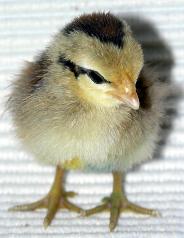

Vaccinating Chicks for Marek's Disease
onto the table on which you will work. You want a surface that won't be slippery. |
dilutant. Clean both with the alcohol on a cotton ball. |
the bottle. |
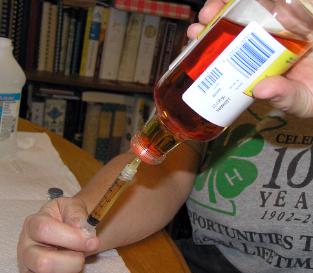
not put it in too much.) Inject the air into the vial (this breaks the vacuum in the vial.) Leave the syringe needle in the vial, do not remove it. |
the dilutant. Remove the syringe. Swish the small bottle around so that the vaccine wafer completely dissolves. Then, pull back on the plunger of the 3 ml syringe to fill it with about 2 to 3 ml of air. This is very important. |
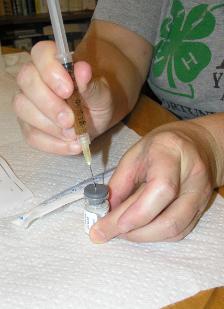
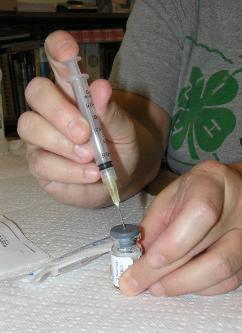
the dilutant bottle. Push the plunger down so that the contents of the syringe (with the now dissolved vaccine) are released into the dilutant bottle. Gently swirl the dilutant bottle so that the vaccine is evenly distributed. Now you're ready to go. |
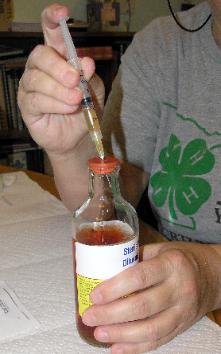
all the unvaccinated chicks into one box (the other box is to put them in once you vaccinate them, so you'll know which ones have been done.) |
perfect for this.) Fill it with 0.2 ml (two tenths) of the vaccine mixture (which is now in the dilutant bottle.). |
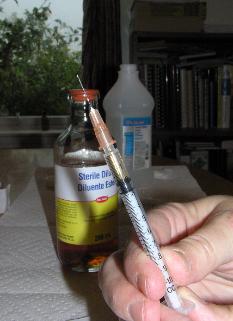
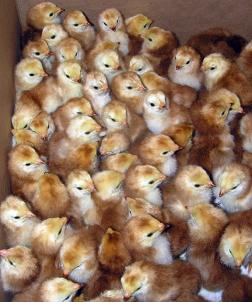
you. Grasp it gently behind the neck, pulling up a small fold of skin. |
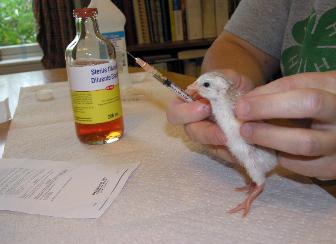
a small bump growing under the bird's skin as the vaccine goes in. If you insert the needle too far or not far enough, you will feel your fingers get too wet, and you will have to start over with that one.. |
which is for the ones who have been done. When you're finished with them all, put them back into the brooder right away so they won't get chilled. Watch them over the next few days for pasted vent or other reactions |
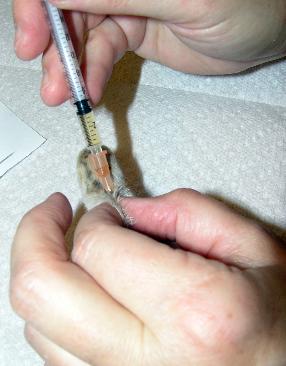
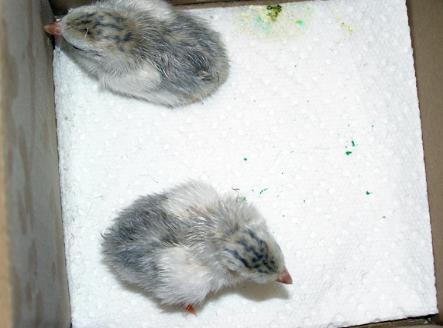
|
| All material copyright 2001 to present by Pathfinders Farm. All rights reserved. No material to be reproduced in any form without prior written permission |